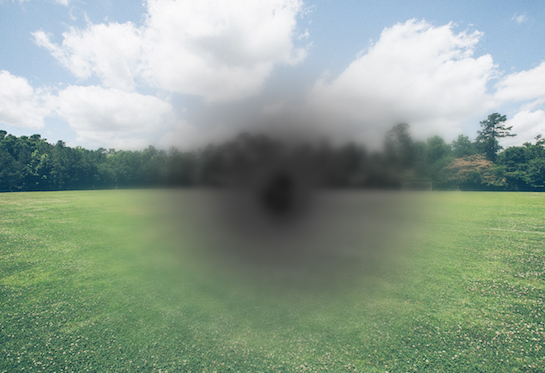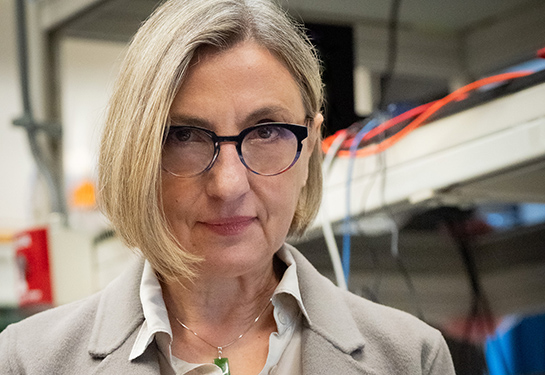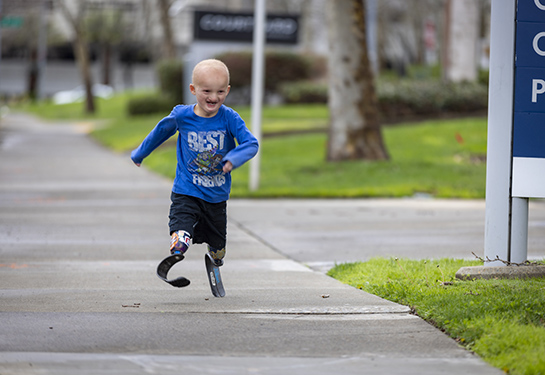Eye Center tests experimental gene therapy for wet age-related macular degeneration
Ophthalmologists at UC Davis Health used an experimental gene therapy last month to treat a patient with wet age-related macular degeneration, or wet AMD. It was the first time the UC Davis Eye Center had used gene therapy.
The treatment was part of a randomized, partially masked, controlled, phase 3 clinical study evaluating the efficacy and safety of an experimental therapy, ABBV-RGX-314, for wet AMD. UC Davis Health is one of 93 sites in the U.S. participating in the clinical trial.
This investigational treatment is not FDA approved, and the efficacy and safety have not been established.
Wet AMD affects approximately 2 million people in the United States, Europe and Japan. It is a leading cause of vision loss among older adults.
If approved, a gene therapy solution has the potential to maintain vision while reducing the number of injections for some patients by allowing the eye to continuously produce the medicine on its own.” —Glenn Yiu, principal investigator for the clinical trial and a professor in the UC Davis Eye Center
“The current treatments for wet AMD may be life-long, and injections can be as frequent as every month,” said Glenn Yiu, professor of ophthalmology at UC Davis Health and principal investigator for the new clinical trial. “If approved, a gene therapy solution has the potential to maintain vision while reducing the number of injections, by allowing the eye to continuously produce the medicine on its own,” Yiu said.
In AMD, the macula, an area of the eye’s lining that helps you see, becomes damaged. This can blur the central part of your vision, making it hard to drive or read. An early symptom of wet AMD is that straight lines look distorted and wavy.
In wet, or neovascular AMD, abnormal blood vessels grow underneath the retina. These vessels lead to bleeding or fluid leakage in the back of your eye, causing vision loss. This process, known as “neovascularization,” is largely driven by a growth factor called vascular endothelial growth factor (VEGF).
Treatments for wet AMD rely on repeated injections of drugs that block VEGF in the diseased eye.

Gene therapy may offer different approach
Unlike stem cell therapies used to treat eye diseases — which involve injecting cells with regenerative or restorative capabilities into the eye — gene therapy generally uses an empty viral envelope (a vector) to deliver a gene with specific genetic instructions for making protein.
ABBV-RGX-314 contains genetic instructions for making anti-VEGF proteins. After a single injection of ABBV-RGX-314 gene therapy, the eye can start to make the medicine on its own.
Yiu performed the first experimental gene therapy eye surgery at UC Davis Health in July. The procedure is more complex than administering a monthly injection. It includes a vitrectomy, where the viscous gel in the eye is removed and replaced with a saline infusion. The experimental treatment with its gene delivery vector is then injected underneath the retina.
Yiu will monitor whether the participant will continue to need monthly anti-VEGF injections in the coming months.
Paul Sieving is the former director of the National Eye Institute and is now a professor of ophthalmology at UC Davis Health. He established the Center for Ocular Regenerative Therapy (CORT) for pursuing cell and gene therapies.
“It is noteworthy for patients in Northern California that UC Davis Health is doing experimental ocular gene therapy studies in the Department of Ophthalmology and Vision Sciences. What excites me most about this is the potential of Dr. Yiu’s work to reduce the repeated eye injections currently required for wet age-related macular degeneration,” Sieving said.
UC Davis Health has enrolled three patients in the clinical trial and plans to enroll more. Individuals aged 50 to 88 with wet AMD who have had prior anti-VEGF injections may be eligible to participate.
For more information, visit the study page, or email Denise Macias, clinical research supervisor, at dcmacias@UCDAVIS.EDU.
Resources
The UC Davis Eye Center
The UC Davis Eye Center provides world-class eye care, pioneers collaborative vision research, and trains the next generation of specialists and investigators to become leaders in the Sacramento region and beyond. The Eye Center team aims to transform vision care and develop cures for blinding eye diseases, from cornea to cortex.







